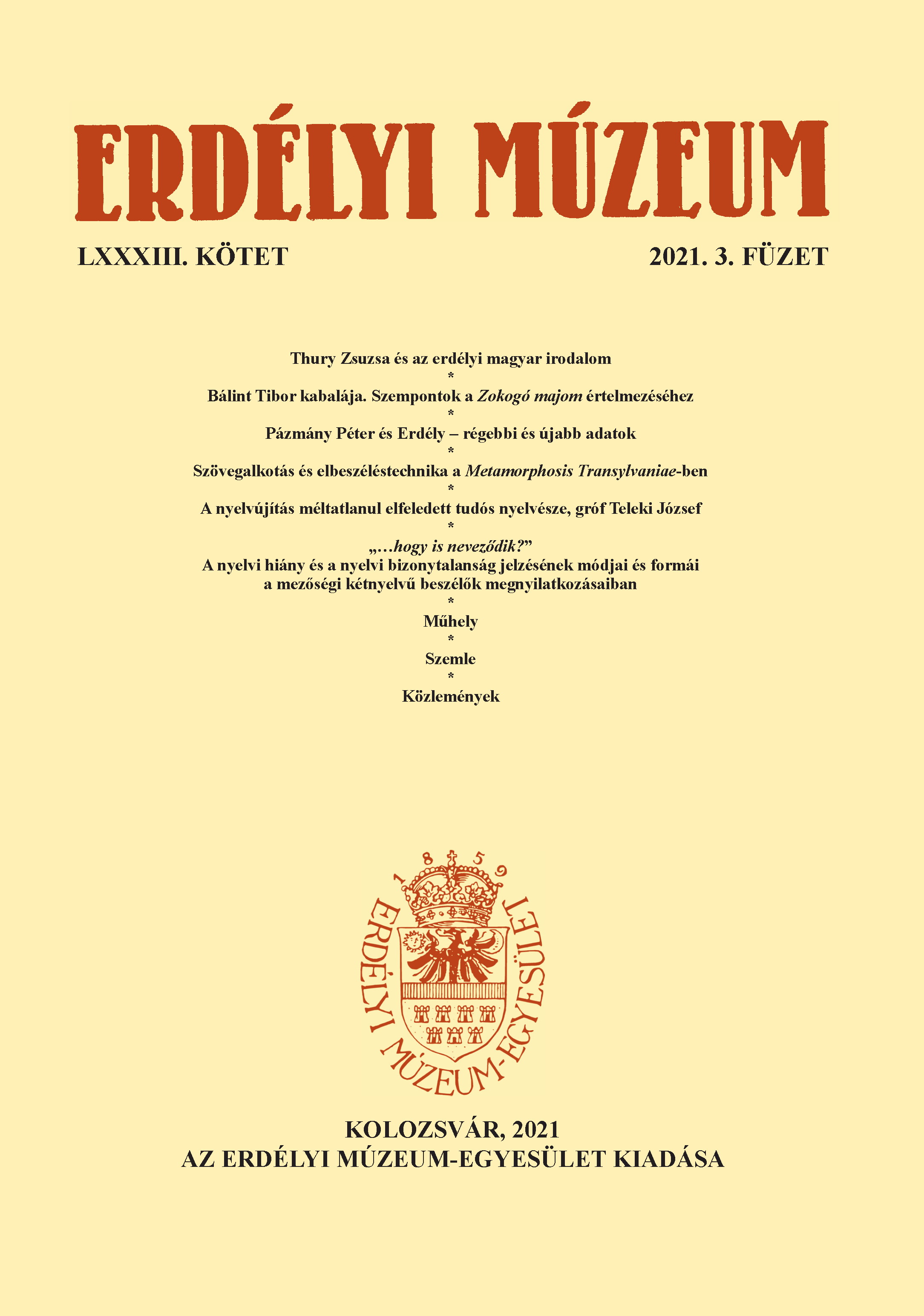„…hogy is neveződik?” A nyelvi hiány és a nyelvi bizonytalanság jelzésének módjai és formái a mezőségi kétnyelvű beszélők megnyilatkozásaiban
„What is it called?” Ways and Forms of Indicating Lexical Gap and Linguistic Uncertainty in the Statements of Romanian-Hungarian Bilingual Speakers
Author(s): Attila Benő, Krisztina SófalviSubject(s): Theoretical Linguistics, Applied Linguistics, Lexis, Culture and social structure , Theory of Communication
Published by: Erdélyi Múzeum-Egyesület
Keywords: lacuna; lexical gap; language insecurity; code-switching; speech strategy;
Summary/Abstract: The article analyses the manifestations of lacuna, lexical gap and language insecurity on the basis of interviews with Transylvanian, Romanian-Hungarian bilingual speakers. Based on living language data, the authors describe the typology of discourse phenomena in the context of lexical gaps, suggesting that speakers often themselves indicate the presence of a language problem with metalanguage remarks. The study also presents speech strategies and pragmatic phenomena that have been less analysed so far in the context of the studied phenomena (legitimation, support request, forms of code-switching, manifestation of the speaker as deictic centre). The typology of the ways of signalising the lexical gaps and the prevailing of the related speech strategies can also be utilized in other bilingual studies.
Journal: Erdélyi Múzeum
- Issue Year: LXXXIII/2021
- Issue No: 3
- Page Range: 65-80
- Page Count: 16
- Language: Hungarian

